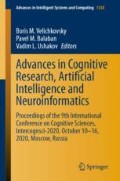Abstract
Focal cortical dysplasia (FCD) is one of the most common epileptogenic lesions associated with cortical development malformations. However, the accurate detection of the FCD relies on the radiologist professionalism, and in many cases, the lesion could be missed. In this work, we solve the problem of automatic identification of FCD on magnetic resonance images (MRI). For this task, we improve recent methods of Deep Learning-based FCD detection and apply it for a dataset of 15 labeled FCD patients. The model results in the successful detection of FCD on 11 out of 15 subjects.
Access this chapter
Tax calculation will be finalised at checkout
Purchases are for personal use only
References
Shin, H.C., Roth, H.R., Gao, M., Lu, L., Xu, Z., Nogues, I., Yao, J., Mollura, D., Summers, R.M.: Deep convolutional neural networks for computer-aided detection: Cnn architectures, dataset characteristics and transfer learning. IEEE Trans. Med. Imaging 35(5), 1285–1298 (2016)
Sharaev, M., et al.: Mri-based diagnostics of depression con-comitant with epilepsy: in search of the potential biomarkers. In: 201D IEEE 5th International Conference on Data Science and Advanced Analytics (DSAA), pp. 555–564 (2018)
Tassi, L., Colombo, N., Garbelli, R., Francione, S., Lo Russo, G., Mai, R., Cardinale, F., et al.: Focal cortical dysplasia: neuropathological subtypes. EEG, neuroimaging and surgical outcome. Brain 125(8), 1719–1732 (2002)
Besson, P., Bernasconi, N., Colliot, O., Evans, A., Bernasconi, A.: Surface-based texture and morphological analysis detects subtle cortical dysplasia. In: MICCAI, pp. 645–652 (2008)
Colliot, O., Mansi, T., Bernasconi, N., Naessens, V., Klironomos, D., Bernasconi, A.: Segmentation of focal cortical dysplasia lesions on mri using level set evolution. Neuroimage 32(4), 1621–1630 (2006)
Pominova, M., Artemov, A., Sharaev, M., Kondrateva, E., Burnaev, A., Bern-stein, E.: Voxelwise 3d convolutional and recurrent neural networks for epilepsy and depression diagnostics from structural and functional mri data. In: Proceedings of IEEE International Conference on Data Mining Workshops (ICDMW), pp. 299–307 (2018)
Dev, K.B., Jogi, P.S., Niyas, S., Vinayagamani, S., Kesavadas, C., Rajan, J.: Automatic detection and localization of focal cortical dysplasia lesions in MRI using fully convolutional neural network. Biomed. Signal Process. Control 52, 218–225 (2019)
Wang, H., Ahmed, S.N., Mandal, M.: Automated detection of focal cortical dys- plasia using a deep convolutional neural network. Comput. Med. Imaging Graph. 79, 101662 (2020)
Van Essen, D.C., et al.: The WU-Minn human connectome project: an overview. Neuroimage 80, 62–79 (2013)
Poldrack, R.A., Barch, D.M., Mitchell, J., Wager, T., Wagner, A.D., Devlin, J.T., Cumba, C., Koyejo, O., Milham, M.: Toward open sharing of task-based fmri data: the openfMRI project. Frontiers neuroinformatics 7, 12 (2013)
Pavlov, S., Artemov, A., Sharaev, M., Bernstein, A.E.: Weakly supervised fine tuning approach for brain tumor segmentation problem. In: Proceedings of ICMLA, pp. 1600–1605 (2019)
Mazziotta, J., Toga, A., Evans, A., Fox, P., Lancaster, J., Zilles, K., Woods, R., Paus, T., Simpson, G., Pike, B., et al.: A probabilistic atlas and reference system for the human brain: Inter national consortium for brain mapping (icbm). Philosophical Trans. of the Royal Society of London. Ser. B: Biol. Sci. 356(1412), 1293–1322 (2001)
Jenkinson, M., Beckmann, C.F., Behrens, T.E., Woolrich, M.W., Smith, S.M.: Fsl. Neuroimage 60(2), 782–790 (2012)
Reuter, M., Schmansky, N.J., et al.: Within-subject template estimation for unbi-ased longitudinal image analysis. Neuroimage 61(4), 1402–1418 (2012)
Pérez-Garcia, F., Sparks, R., Ourselin, S.: TorchIO: a python library for efficient loading, preprocessing, augmentation and patch-based sampling of medical images in deep learning. arXiv: 2003.04696 [cs, cess, stat] (2020)
Author information
Authors and Affiliations
Corresponding author
Editor information
Editors and Affiliations
Rights and permissions
Copyright information
© 2021 The Author(s), under exclusive license to Springer Nature Switzerland AG
About this paper
Cite this paper
Aliev, R. et al. (2021). Convolutional Neural Networks for Automatic Detection of Focal Cortical Dysplasia. In: Velichkovsky, B.M., Balaban, P.M., Ushakov, V.L. (eds) Advances in Cognitive Research, Artificial Intelligence and Neuroinformatics. Intercognsci 2020. Advances in Intelligent Systems and Computing, vol 1358. Springer, Cham. https://doi.org/10.1007/978-3-030-71637-0_67
Download citation
DOI: https://doi.org/10.1007/978-3-030-71637-0_67
Published:
Publisher Name: Springer, Cham
Print ISBN: 978-3-030-71636-3
Online ISBN: 978-3-030-71637-0
eBook Packages: Intelligent Technologies and RoboticsIntelligent Technologies and Robotics (R0)

